"Go #30 Or Go Home"
I'm not really a sticker person, but I do love Pilot, so when I saw that the Pilot team was giving out stickers at the 2024 Washington DC Fountain Pen Supershow, I had to choose a few, just because. One of them especially intrigued me, and I later put it on the Mnemosyne notebook I brought to the 2025 show. It's a simple round sticker, showing a large and elegant Pilot nib with the bold declaration, "GO #30 OR GO HOME."

When we had some time to talk outside of the bustle of the busy show, I asked Bill Pearcy, our wonderful Pilot representative, "Why #30? What makes it so special?" Pilot's #30 nib isn't their largest; that would be the huge #50 nib found only on Namiki Emperor pens. But, it's definitely a very impressive nib, roughly the same size as a #8 nib in Western nib terminology. The famous Sailor King of Pen, Montblanc 149, and Pelikan M1000 nibs are in the same category, although each of these nibs has its own unique characteristics and distinct feel when you write with it. Bill explained to me that the #30 nib is considered by many people to be Pilot's best nib because its shape and size provide an amazing bounciness that feels incredible to write with, and that the Custom Urushi, which features the #30 nib, is Pilot's flagship fine writing pen. Until the Namiki Aya was released in February, 2023, Custom Urushi was Pilot's only pen with a #30 nib. Both the Custom Urushi and the Aya are highly desirable to collectors and writers who really like to experience a bold and luxurious writing instrument that stands out as something truly special.

Sure, "GO #30 OR GO HOME" is obviously a catchy marketing slogan, but I couldn't stop thinking about the #30 nibs and the pens that showcase them. Both Custom Urushi and Aya are very large and eye-catching pens that stand out on the top shelf of our Pilot display cabinet, and I love to take them out of the case to show customers how beautiful they are in the sunlight. They are oversized for me, but when I watch customers with large hands' eyes widen with delight as they hold a Custom Urushi or Aya, I know the pens' substantial size feels right to them and satisfies them in a way that smaller pens just can't.
I always feel a little bad when I have to tell them they can't try the nibs, though. Of course, I understand why. These pens are over $1,500 each, and Pen Boutique doesn't have testers. It's too risky to allow someone who may or may not be experienced with fountain pens to write with a large soft nib that they may not end up buying. But, these nibs are special, and they are a huge part of what makes the pens so highly regarded.
So, I started thinking... what if I could try the nibs for a blog article, and share my thoughts with my readers? I'd sampled the #30 nib a few times during Pen Boutique store events when Bill brought his tester pens, but that was only for a moment or two. It would be very interesting to get to use them more extensively, compare all the nib sizes, and really get a feel for the nibs, not to mention to admire and photograph the pens' stunning details up close, in natural lighting. I proposed my idea to Bill, and he loved it. Although I was a little nervous about borrowing six pens with a total worth of $18,400, Bill said he trusted me completely, and was very happy to lend them to me between two of his pen shows! He told me I could use them as much as I wanted, write with them, fill them, and put them through their paces. Wow!
Custom Urushi: Impressive Proportions
I've written extensively about the Pilot Custom 845 in my "Attainable Urushi - Pilot's Urushi Lacquer Pens Under $1,000" article, and it's easy to confuse this pen with the Custom Urushi if you only see them in photos. Custom Urushi is like the big brother of Custom 845, and they look exactly alike, other than body size and nib size.

[Pictured: Custom 845 and Custom Urushi in Vermillion.]
Both models feature an ebonite core and rich, glossy Urushi lacquer finish, a handsome and classic shape, and a gorgeous two-tone 18k nib, but Custom Urushi is an oversized 154.6 mm (6.1") long pen with girthy proportions. Its 15.9 mm diameter body and 12.3 mm diameter grip section make Custom 845--quite a reasonable sized pen at 146.3 mm (5.76") long, with a body diameter of 13.2 mm and grip diameter of 10.5 mm--look small in comparison!
 [Pictured: Custom Urushi in my hand, a medium-sized woman's hand.]
[Pictured: Custom Urushi in my hand, a medium-sized woman's hand.]
The difference in their nib sizes is equally dramatic. Custom 845's nib is Pilot's #15, the same loved and respected size featured on the Custom 823 and Custom 743, but in a softer and very beautiful two-tone 18k gold, rather than the 14k gold on those pens. Custom Urushi's #30 nib is also 18k gold, but is much larger, has far broader shoulders and feels extremely different.
 [Pictured: Pilot's #15 nib, #30 nib, and #50 nib, all in 18k gold. Note the proportionally broader shoulders (the widest part of the nib) on the #30.]
[Pictured: Pilot's #15 nib, #30 nib, and #50 nib, all in 18k gold. Note the proportionally broader shoulders (the widest part of the nib) on the #30.]
The #30 nib, which was created for the Pilot Custom Urushi and made its debut upon the pen's launch in September, 2017, has an exposed length out of the section of 1-1/16”, as opposed to 15/16” for the #15 nib. That's 1/8" longer! The difference in width at the shoulders is even more dramatic. The #30 is 7/16” at the shoulders, while #15 is 5/16”, also a difference of 1/8". Because that's a much larger percentage of the width, it's even more extreme, and, looking at them side by side, it's easy to understand why the #30 nib writes so differently. Not even the gigantic #50 nib has widely flaring shoulders like #30 does, and the shape is also more dramatic than that of comparably sized nibs such as those on the Sailor King of Pens, Pelikan M1000, and Montblanc 149.

[Pictured, left to right: Sailor King of Pens Urushi Kaga Black, Pilot Custom Urushi in Black, Pelikan Souverän M1000 in Black, and Montblanc 149 in Black with Gold Trim.]
I took the photo below for my own reference in the store when I didn't have a lot of time, so I didn't position the pens' clips carefully or remove all the tags, but it still serves to show how much bigger the Custom Urushi is than the other three pens, all of which are quite large themselves. (All of these pens can be posted, but I personally would not post any of them while writing.)
 [Pictured, top to bottom: Sailor King of Pens Urushi Kaga Black, Pilot Custom Urushi in Black, Pelikan Souverän M1000 in Black, and Montblanc 149 in Black with Gold Trim.]
[Pictured, top to bottom: Sailor King of Pens Urushi Kaga Black, Pilot Custom Urushi in Black, Pelikan Souverän M1000 in Black, and Montblanc 149 in Black with Gold Trim.]
A few months ago, a customer named Joel came into the store to look at the Custom Urushi, and asked me if he could dip test the nib to see how it wrote. Unfortunately, I had to tell him we don't allow that, and he was very understanding. However, he was concerned about whether the finest nib size, Fine Medium, would write fine enough for his small handwriting. Because the #30 is such a large nib, it is only available in Fine Medium, Medium, and Broad. Joel already owned the Custom 845 in Fine, and loved it, but he wanted a larger companion to keep at his desk. Wanting to give him a helpful answer, I decided to call Bill and ask him if he could compare his tester pens' #30 and #15 nibs and verbally describe the difference.
Bill was happy to oblige, and said the #30 nib's Fine Medium line width was equivalent to a #15 nib in Medium, although much springier feeling and with more line variation. So, Joel tried the Medium #15 nib in our store, and thought hard about it. Although he was excited by the idea of the bouncy nib, he just wasn't sure if the line width would suit his handwriting, as he usually uses Fine nibs.
I could tell Joel really loved the Custom Urushi pen, and that he was tortured with indecision. I showed him many other beautiful large pens with large nibs, but, after holding them in his hand, he still couldn't decide. He admitted they were nice, but they just weren't the pen for him. I could see how much he loved the Custom Urushi and wanted it, despite thinking the writing would be too thick for him. He kept trying to convince himself to consider a different pen, but returned again and again to pick up the Custom Urushi.
 [Pictured: Custom Urushi in Black and Vermillion, with calligraphy by Master Penmen Hong Nguyen of Rose Art Creative. I had the honor of meeting Hong at the Detroit Pen Show. She is so talented and kind!]
[Pictured: Custom Urushi in Black and Vermillion, with calligraphy by Master Penmen Hong Nguyen of Rose Art Creative. I had the honor of meeting Hong at the Detroit Pen Show. She is so talented and kind!]
Finally I suggested that he step away overnight. If he couldn't stop thinking about it, he'd know. Less than half an hour later, when I was on my lunch break, my coworker, Pierce, came into the kitchen to tell me that Joel had returned and was buying the Custom Urushi. I was surprised, but not shocked. Nothing else could match up to the feeling of that pen in his hand, or its classic and bold good looks, with the rich glossy Urushi lacquer, shiny gold cigar band -like cap ring, flat end finials, understated but evident luxuriousness, and large broad-shouldered nib.

[Pictured: Custom Urushi in Black with calligraphy by Master Penmen Hong Nguyen of Rose Art Creative. When I told Hong how much I loved and believed what she had written on this card, she said she wanted me to have it! I couldn't believe it! Thank you, Hong!]
I think a large part of the reason that the pen feels so irresistible is the Urushi lacquer. It seems to disappear in your hand and almost become part of you as it warms to the temperature of your skin. The colors have a richness and depth that can't be replicated, and you will notice that the material looks and feels more "real" than resin does, if that makes sense. The finishing technique that is used on Pilot's Custom 845 and Custom Urushi is called Roiro (蝋色), and is the same one used on Namiki's highly revered Urushi Collection, which you can read more about in my Namiki article.
The Roiro technique, characterized by a mirror-like smoothness and deep gloss, is more refined than other lacquering methods, and requires a higher level of skill to produce.
As described in Pilot's Maki-e History and Limited Editions guide,
All the base surfaces of Pilot’s Maki-e products are finished by this technique, which uses a hard Kurome lacquer from which the oil is drawn out. This is unique to lacquering and may be understood by visualizing the wet gentle gloss of melted candle wax. After applying and drying the lacquer, it is rubbed down with charcoal until it becomes smooth. Refined raw lacquer is then rubbed onto this surface and is allowed to dry. After repeating this process several times, the surface is polished with Tsunoko dust, which gives it a smooth finish like the surface of wax. Moreover, the surface is hard and cannot easily be damaged, having a resistance to acids and alkalis and has been said to resist heat up to 200C. Roiro finishing is the symbol of high quality Maki-e.
The beauty achieved by this technique must be seen in person to truly be appreciated, but I think you can get an idea of how special it is if you look at my photos.

A highly anticipated third Custom Urushi color, Prussian Blue, was released in November, 2024, but supplies were extremely limited because of the powerful earthquake and later flooding that hit Japan's Noto Peninsula, destroying a huge number of Urushi trees. Each US store was only allocated one pen in Pilot's first shipment, and it sold out everywhere almost instantly. I still remember the excitement when we got this pen! Prussian Blue is not a limited edition color, and Pilot US is receiving a few each month from Japan, but it will be very hard to find for a while still.
I was recently able to take a photo of the Vermilion and Prussian Blue pens together at the Detroit Pen Show, thanks to nibmeister Kirk Speer from Pen Realm, who has one. Thank you so much for bringing the pen for me to see, Kirk! It was great to see Kirk at the show, and we will be welcoming him back to our store again for an event in November. You can sign up on his website now! Prussian Blue is a dark, beautiful shade, and I can see why blue lovers got very excited about this addition to the lineup.

Abstract Aya
The Aya Collection was introduced in February, 2023 because Pilot longed to expand the use of the #30 nib. Although Aya is physically too large for me to use comfortably, I love these pens and am fascinated by them! This model seems so surprising and different to me, and I love showing it to people and blowing their minds a little. The unique shape and size, beautiful colors, abstract patterns, and subtle but stunning use of Raden (mother of pearl) set Aya apart, and it has a more modern look than any of the traditional Namiki pens. But, just like the other pens in Pilot's Namiki Collection, Aya are created by the “Kokkokai,” Pilot's elite group of highly skilled dedicated Maki-e artisans, and they are signed with the Kokkokai group signature.

The Japanese word "Aya" has multiple meanings, including "beautiful colour, gloss, shine, and pattern," and I learned from the Namiki Collection guide that the abstract patterns express different aspects of nature, together representing "an enchanting world that captures the viewer's imagination." I love abstract patterns, and I love using my imagination, so the Aya collection fascinates me!

There are only four pens in the entire Aya collection, and I love them all. Each one has a different mood, and details I can't resist. Hayate (Gale), a black pen finished with silver-round powders, features sweeping lines encircling the body of the pen, a powerful and sophisticated depiction of majestic winds. The Japanese word "Hayate" is also used to express something that is pure and lively. This pen is extremely classy, and Bill told me it's his favorite! My coworker, Harsh, loves Hayate's earth tones and calm elegance, too.


Akatsuki (Daybreak), the deep red pen with gold powders and gold-round powders, depicts the moment when light first appears in the morning. The bold flame-like patterns on its cap and barrel give Akatsuki a very exciting feel, and this pen may be the most poetic of the four.... the Japanese word for "daybreak" is also used for a eureka moment or realization achievement. How perfect for a writer!


Tokiwa (Evergreen) really comes to life in sunlight. The green lacquer is a stunningly verdant shade, and the crushed abalone shells and gold-flat powders shimmer brightly. This design depicts evergreen trees on a mountain landscape with a gradient effect, symbolizing everlasting life. A starry night sky surrounds the stylized evergreen trees. The Japanese word "Tokiwa," like the English "evergreen," means "something that will never change," like the trees that maintain their rich green needles even in the cold of winter. I love the overlapping pattern on this pen, the meaning, and the shade of green. I think it's my favorite of the four.


[Pictured: Hayate in the foreground and Tokiwa in the rear, with Seiryuu's cap in between.]
Seiryuu (Limpid Stream) features brilliant blue dry lacquered powders in a wave design to illustrate the gentle flow of water, enhanced in the background by a mixture of crushed abalone shells, silver-flat powders, and silver-round powders that epitomize water's ever-changing and brilliantly reflective surface. The Japanese word "Seiryuu" also symbolizes the calm in nature that enriches the mind. Wow, just perfect. Being near the water always calms and renews me.


This series is made in a unique way, using dry lacquer powders, gold powders, and silver powders, which are applied with differing intensities against a rich black Urushi lacquer background, using Togidashi Maki-e (Burnished Maki-e), a form that dates back to the 7th century.
The dry lacquer powders used are created by mixing pigments with clear lacquer and applying the lacquer to a glass surface several times. They are allowed to dry, then peeled off the glass and crushed to create the special intensely-colored powder.
After the various powders are used to create the evocative abstract designs, the pen's surface is coated with another coat of Urushi lacquer, which is burnished with charcoal after it dries. The pattern is polished until glossy.
 Aya is even larger than the Custom Urushi, at 164.4 mm (6.47") long when closed (vs. 154.6 mm), and its body length is 150.7 mm vs. 140.2 mm. Even the grip section is slightly larger, with a 12.6 mm diameter, as opposed to Custom Urushi's 12.3 mm diameter. However, its ebonite core helps keep the weight down, so the body (without cap) weighs in at 29 g (1.02 oz). That's only a little heavier than Custom Urushi's 25 g (1 oz). For me, the grip section feels too large for my finger length, but the pen itself is so well balanced, I can barely feel it resting in my hand.
Aya is even larger than the Custom Urushi, at 164.4 mm (6.47") long when closed (vs. 154.6 mm), and its body length is 150.7 mm vs. 140.2 mm. Even the grip section is slightly larger, with a 12.6 mm diameter, as opposed to Custom Urushi's 12.3 mm diameter. However, its ebonite core helps keep the weight down, so the body (without cap) weighs in at 29 g (1.02 oz). That's only a little heavier than Custom Urushi's 25 g (1 oz). For me, the grip section feels too large for my finger length, but the pen itself is so well balanced, I can barely feel it resting in my hand.
 [Pictured: the Tokiwa (Evergreen) Aya in my hand.]
[Pictured: the Tokiwa (Evergreen) Aya in my hand.]
My coworker, Harsh, has much longer fingers than mine, and, when I asked him to try Custom Urushi and Aya, he loved the size of both, but actually liked the feel of Aya even more than Custom Urushi, even though he leans toward Custom Urushi's more classic looks. He said Aya's slightly larger grip section and extra barrel length makes the pen even more comfortable in his hand and he could imagine loving it for long writing sessions. He has a medium-sized man's hand, and mine is a medium-sized woman's hand.
 [Pictured: the Akatsuki (Daybreak) Aya and Black Custom Urushi, side by side.]
[Pictured: the Akatsuki (Daybreak) Aya and Black Custom Urushi, side by side.]
 [Pictured: the Hayate (Gale) black Aya in Harsh's hand.]
[Pictured: the Hayate (Gale) black Aya in Harsh's hand.]
 [Pictured: the Vermillion Custom Urushi in Harsh's hand.]
[Pictured: the Vermillion Custom Urushi in Harsh's hand.]
Writing with the #30 Nib
Despite their slightly different sizes and very different outward appearances, the Custom Urushi and Aya are close siblings: both are made from Urushi lacquer, both fill with Pilot's easy to use high-capacity CON-70 converter or Pilot cartridges, and both, of course, feature that nib.
It took me longer than I expected to wrap my mind around the #30 nib. It really does feel different, and if you pick up the pen and start writing with it the same way you do with your other fountain pens, it may scare you a little at first. It will also amaze and thrill you. I had fun letting several of my colleagues try the pens and watching their astonished and effusive reactions as they wrote their first line. I had to take my time and practice to get a feel for the #30 nib before I began to get confident writing with it.
The #30 nib is springy and very, very responsive. Even when you use a light hand, it bounces as you write, producing natural line variation. If I give the nib a little more pressure, the degree of line variation rivals that of my Pilot FA (Falcon) nib, although the FA nib's line width is much finer and the nib almost feels stiff in comparison. Wild! For me, some line variation naturally happens almost constantly with the #30 nib.

It is not, however, difficult to control the #30 nib, if you slow down and take your time with it. Unlike what you might fear, it does provide feedback; in fact, it has more feedback than any other Pilot nib I have tried. It's not a Sailor nib level of feedback, but you can feel the tip of the nib as it moves over the paper, and even hear a pleasing amount of auditory feedback. I love the sound. The nib is smooth, but not overly smooth, even in Broad. It doesn't feel slippery or imprecise. It doesn't skate over the paper. Although it is a very wet writer, the feed is able to keep up, and I didn't have any problems with railroading, even when gently flexing the tines.
 I did find the nib's sweet spot a little challenging at times, especially in the Fine Medium nib size. I have a tendency to rotate my hand outward a bit as I write, and it was more difficult than usual for me to maintain contact with the paper, especially as my fingers grew tired after writing for a while. I think this was due to a combination of the size and shape of the nib, the change of angle and distance between my fingers and the paper due to the longer nib, and the grip section being too large for my hand, which tired my fingers and made it harder for me to maintain a proper grip.
I did find the nib's sweet spot a little challenging at times, especially in the Fine Medium nib size. I have a tendency to rotate my hand outward a bit as I write, and it was more difficult than usual for me to maintain contact with the paper, especially as my fingers grew tired after writing for a while. I think this was due to a combination of the size and shape of the nib, the change of angle and distance between my fingers and the paper due to the longer nib, and the grip section being too large for my hand, which tired my fingers and made it harder for me to maintain a proper grip.
However, as I got a better feel for the pens, my writing began to develop a rhythm that reminds me of the bob of a boat on the water. The nib's bounce makes writing feel like dancing. I began to really enjoy writing in cursive, rather than my usual printing. Even though I am out of practice, and I'm embarrassed by how childish and inconsistent my cursive looks, cursive just feels right with the #30 nib. (I also love how the nib feels when I print very fast. The writing is so expressive.)

As with Pilot's other 18k gold nibs, the #30 needs such a light touch. Although you can give it a little pressure for line variation, it requires no pressure to write. The Fine Medium nib is, as I mentioned earlier, about equivalent to what you'd expect from a Medium Pilot nib, but, if you have a heavy hand, it gets thicker.

The Medium nib, which is more like a typical Pilot Broad, was my favorite. It's only slightly thicker than the Fine Medium, and is still precise enough to write very cleanly, but just feels deliciously smooth and responsive to use. This nib has a little less feedback than the Fine Medium, but you are still very in touch with your writing surface, and it's a tactile and sensual experience.

The Broad is more like a Double Broad or even thicker, and this nib is juicy and fun. When Harsh began writing with the Broad, he broke into a grin and wrote, "Hellllllll yeah. Looooove this." I had a more restrained but similar reaction, and wrote, "I weirdly love the broad! I am very surprised that the broad is actually my favorite."

I think that if I were to get a #30 nib, I would actually get the Medium, and it's the one I ended up writing with most, but the Board is the most purely pleasurable, even if it's not the most practical of the three. Harsh's comment was, "Still usable. Not for quick notes in the OR, I guess." Ha! No, it's quite showy, and would be incredible for signatures, short cards, and dramatic statements in your journal, but probably isn't the best choice for long form writing or filling in appointments in your planner. But, boy, does it bring out the beauty in your ink!
Here's a comparison between the Pilot #15 nib in Medium, #30 nib in Fine Medium, #15 in Broad, #30 in Medium, and #30 in Broad, with #30 Fine Medium and #15 FA (Falcon) at the bottom, as a bonus. I hope this helps you really understand when choosing a nib size.

I wrote with the pens on both Midori and classic Tomoe River paper, and had excellent results, with no bleeding or feathering, despite the nibs' wetness. I had an easier time writing with the Fine Medium on the smoother Tomoe River, while I preferred the slightly toothier Midori with the other two nibs. My goofy drawings and freeform experimentation below was on Tomoe River paper.

I was able to borrow Bill's tester pens for about two weeks, so I got to experiment with them enough to get a good feel for the #30 nib, but I still wouldn't say I am an experienced user. I do know someone who owns an Aya and uses it regularly, though, so I reached out to him to ask for his honest feedback on the pen, and specifically, the nib. I met Lenny Eiger several years ago at the DC Fountain Pen Supershow and always look forward to seeing him each year at the show, hanging out, talking, and playing with pens. Lenny is an interesting and kind person, and I'm glad to call him my friend. He also has an incredible pen collection, and the pens he chooses are not just beautiful, they are also fun. He fills them with gloriously sheening and shimmering ink in magnificent colors, and is very generous with allowing others to try his beautiful pens and experience the joys of these luxurious writing instruments. The first Aya I ever wrote with was Lenny's blue Seiryuu, and I never forgot how cool and exciting it was.

This is what Lenny has to say about the Aya:
Simply, the Namiki Aya is the best nib I've used. I've always been a critical thinker; if someone says the sky is blue, I look up.
Which is why, when a colleague praised the Namiki, I needed to see. I compared a selection of exceptional pens: a Pelikan M1000, a Sailor King of Pen, a Montblanc 149, an Aurora Duca, an Otto Hutt Design C, a Santini, and the Namiki Aya.
Being a perfectionist and a pen enthusiast, I learned to tune fountain pen nibs a few years ago. For this test I made sure each nib was writing perfectly: the flow was precisely adjusted with a feeler gauge, the tines were perfectly aligned, and every nib was polished to a mirror finish using 60,000-grit lapping film.
They were all excellent, every last one. The differences were almost imperceptible.
Yet the Namiki edged above the rest. Its size and shape made it shine. It struck the perfect balance, with just enough spring—that quality enthusiasts call "bounce." More than smooth, it was a pleasure each time I put the pen to paper.

Lenny has far more experience using luxury pens than I do, and I think his testimony speaks for itself! I knew he loved his Aya, but he has an incredible collection, and I didn't expect him to say it was his best nib. Wow! Thank you again for taking the time to share that, Lenny.
I guess I buried the lede, but it was certainly fun and interesting getting there. I'm a little sorry I need to send Bill's tester pens back to him next week. Now that I've finally figured out its rhythm, I'll miss dancing with that #30 nib.
-Laura P.
I love comments on my blog! Please leave comments if you like the articles, and, if you have any questions about this article, or any of the other blog articles, you can e-mail support@penboutique.com. Thank you!


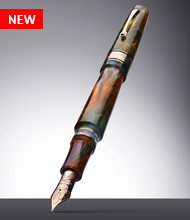
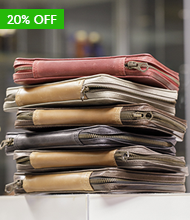
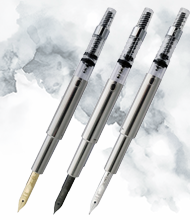
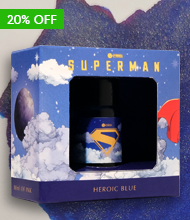

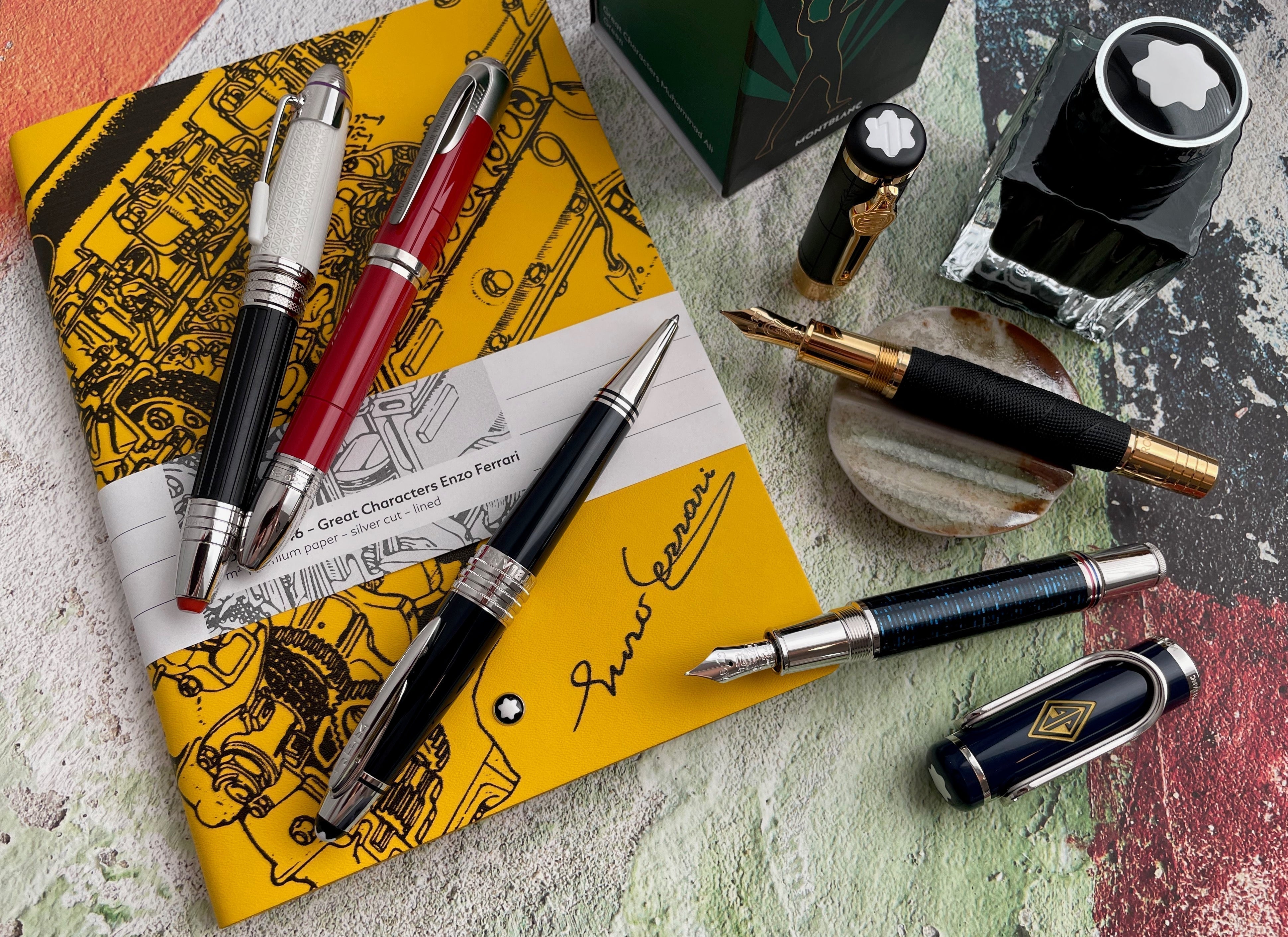
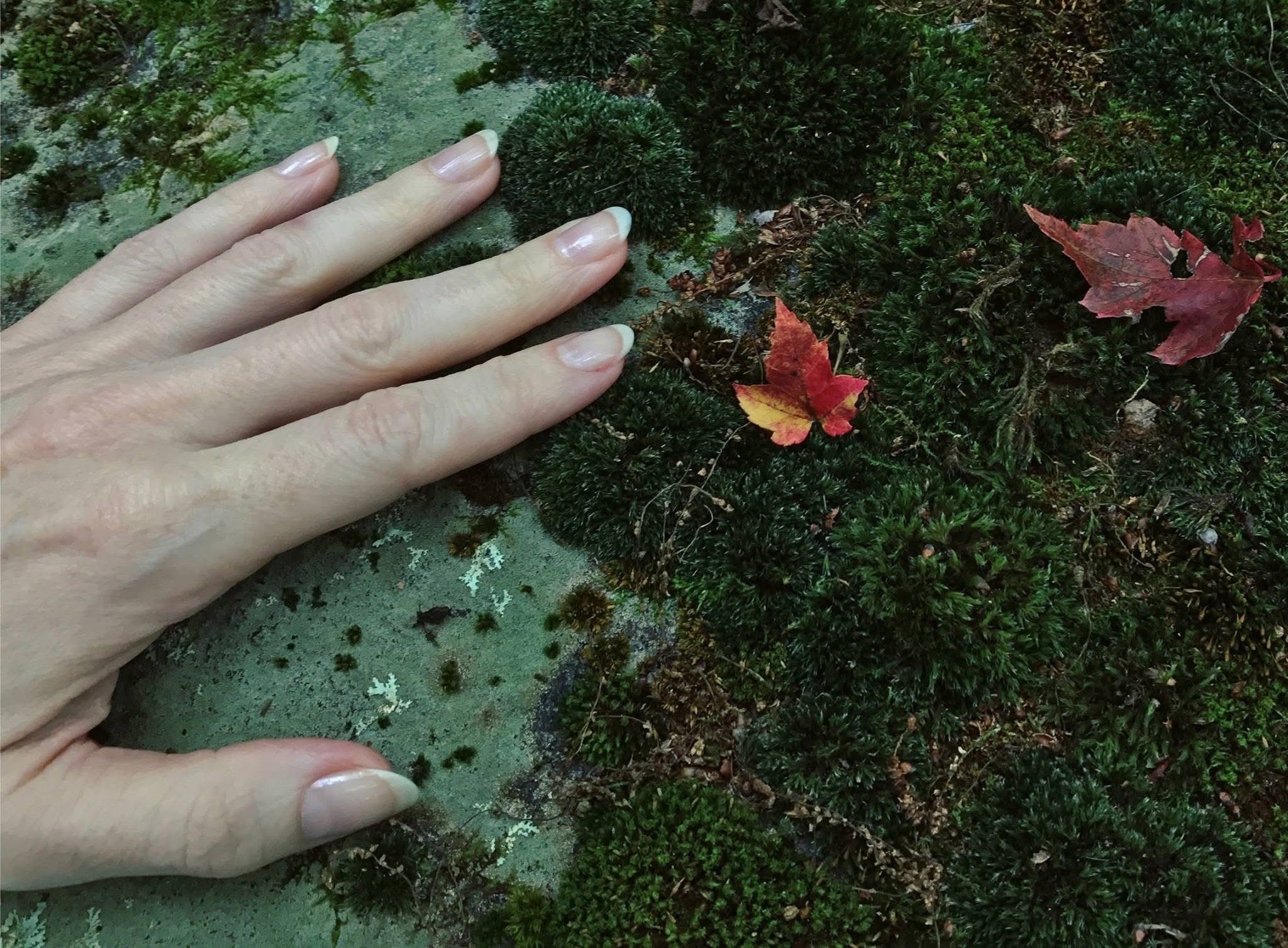

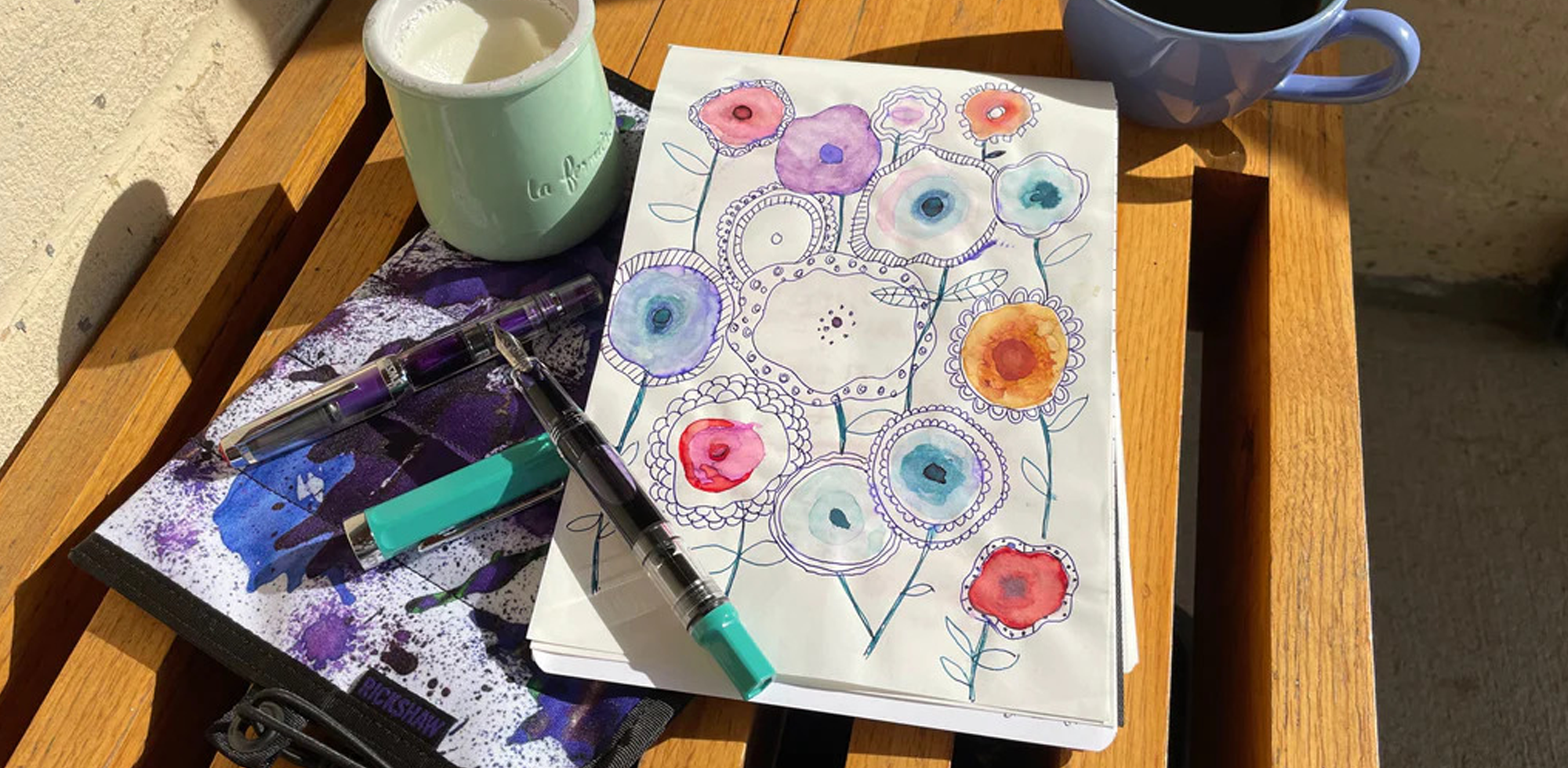
9 commentaires
Eric Arnold
It brings me no end of pleasure to read your blog posts. Every time!
It is exceptionally difficult to express in words how writing makes one feel, much less writing with a particular instrument. Your ability to convert those feelings into words, and convey that sensory and emotional experience into something that one who has never even held such a pen in hand is beyond compare. Watching you hone that ability over time as you explore each different pen, or aspect of them, is not only a joyful experience, it is an educational one. I hope to learn from you not just about the pens, but how you write, and i am never disappointed!
“The nib’s bounce makes writing feel like dancing.” Write dancing. Perfect.
As always, just a pleasure Laura. Thanks so much for sharing your heart and joy of writing in these articles!
It brings me no end of pleasure to read your blog posts. Every time!
It is exceptionally difficult to express in words how writing makes one feel, much less writing with a particular instrument. Your ability to convert those feelings into words, and convey that sensory and emotional experience into something that one who has never even held such a pen in hand is beyond compare. Watching you hone that ability over time as you explore each different pen, or aspect of them, is not only a joyful experience, it is an educational one. I hope to learn from you not just about the pens, but how you write, and i am never disappointed!
“The nib’s bounce makes writing feel like dancing.” Write dancing. Perfect.
As always, just a pleasure Laura. Thanks so much for sharing your heart and joy of writing in these articles!
Jim Pearl
I purchase a Cross Roller Ball retractable pen from Pen Boutique, and for some reason the pen wrote retract, and it is stuck in the open position. I love the pen, but I’m afraid the ink will eventually dry up if I can’t retract it. Please let me know how I can replace it. Thank you, Jim Pearl
I purchase a Cross Roller Ball retractable pen from Pen Boutique, and for some reason the pen wrote retract, and it is stuck in the open position. I love the pen, but I’m afraid the ink will eventually dry up if I can’t retract it. Please let me know how I can replace it. Thank you, Jim Pearl
Jim Pearl
I purchase a Cross Roller Ball retractable pen, from Pen Boutique, and for some reason the pen wrote retract, and it is stuck in the open position. I love the pen, but I’m afraid the ink will eventually dry up if I can’t retract it
I purchase a Cross Roller Ball retractable pen, from Pen Boutique, and for some reason the pen wrote retract, and it is stuck in the open position. I love the pen, but I’m afraid the ink will eventually dry up if I can’t retract it
Judy
Very thoughtful and careful comparisons, Laura. Thank you. I own several Pilot pens, but the one that most resembles those you show early in your article is the Lucina. It is no longer produced, has a steel nib, and writes pretty well. I got mine second hand, not from BIIIIIIILLLL! (couldn’t help myself). It’s blue. Will I get one of the gorgeous urushi finished pens? Not likely. But I do admire and enjoy your photos and discussions.
Very thoughtful and careful comparisons, Laura. Thank you. I own several Pilot pens, but the one that most resembles those you show early in your article is the Lucina. It is no longer produced, has a steel nib, and writes pretty well. I got mine second hand, not from BIIIIIIILLLL! (couldn’t help myself). It’s blue. Will I get one of the gorgeous urushi finished pens? Not likely. But I do admire and enjoy your photos and discussions.
Susan
Great article – awesome detailed but not boring information- appreciate the thoughtfulness you display in all of your articles
Great article – awesome detailed but not boring information- appreciate the thoughtfulness you display in all of your articles
Michelle Christensen
Great Article! I have a Custom Urushi which was a daily writer for me and then I bought an Emperor as a collector but it has turned into a daily writer for me, which surprised me. Given its size I didn’t think I would use it all the time but I do. I have been looking for a way to describe the sensory experience of writing with that giant #50 nib and I may steal your words next time someone asks…it’s like the bob of a boat in the water…writing is meditative for me and that nib kicked it up a level! I do have large hands so maybe that’s the reason I love it so much. I just wish it was more portable😂
Great Article! I have a Custom Urushi which was a daily writer for me and then I bought an Emperor as a collector but it has turned into a daily writer for me, which surprised me. Given its size I didn’t think I would use it all the time but I do. I have been looking for a way to describe the sensory experience of writing with that giant #50 nib and I may steal your words next time someone asks…it’s like the bob of a boat in the water…writing is meditative for me and that nib kicked it up a level! I do have large hands so maybe that’s the reason I love it so much. I just wish it was more portable😂
Gayle Adams
Great article, Laura! Lovely to see some of Master Penman Hong Nguyen’s work as well.
Great article, Laura! Lovely to see some of Master Penman Hong Nguyen’s work as well.
Laura P. (blog author)
Hi David! Thank you for your comment! I’m so happy you liked the article. Yes, the Pilot team does allow people to try these pens at pen shows and store events! We’ll be having an event with Bill at Pen Boutique on December 5th & 6th and I hope you can make it!
Hi David! Thank you for your comment! I’m so happy you liked the article. Yes, the Pilot team does allow people to try these pens at pen shows and store events! We’ll be having an event with Bill at Pen Boutique on December 5th & 6th and I hope you can make it!
David Fu
Wowza! Jealous! Lovely article.
I don’t remember, do Pilot let folks try these when they come to a show? If so, I’m going to have to spend more time at their table the next chance I get.
Wowza! Jealous! Lovely article.
I don’t remember, do Pilot let folks try these when they come to a show? If so, I’m going to have to spend more time at their table the next chance I get.